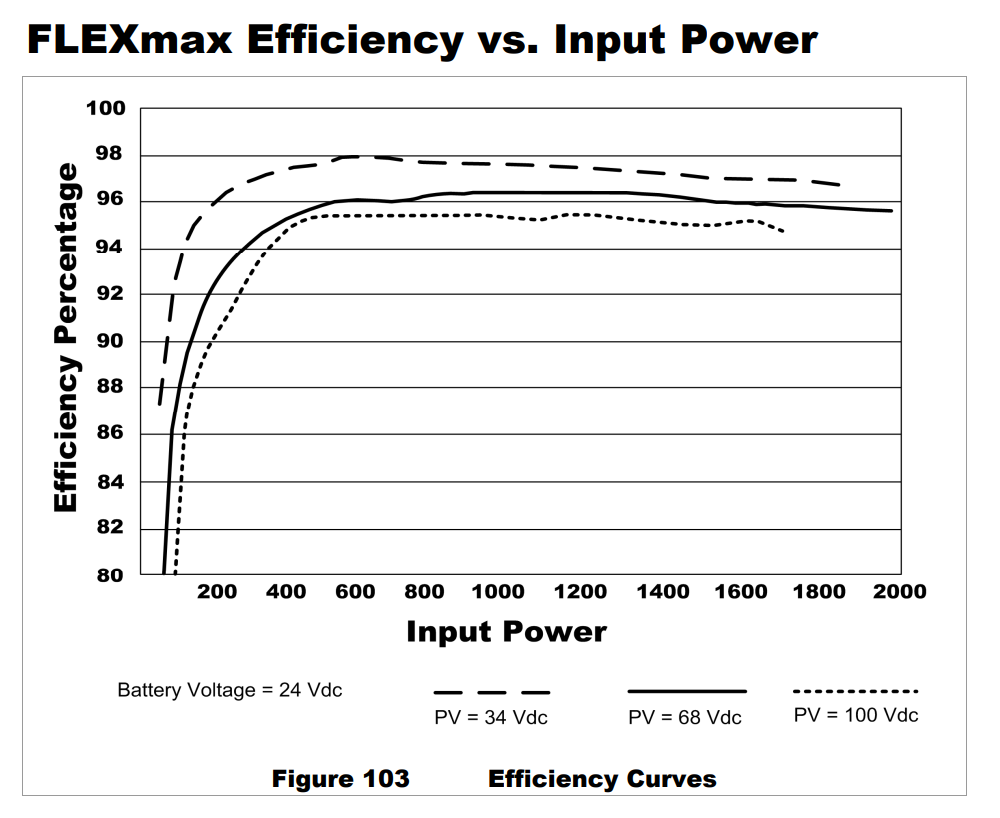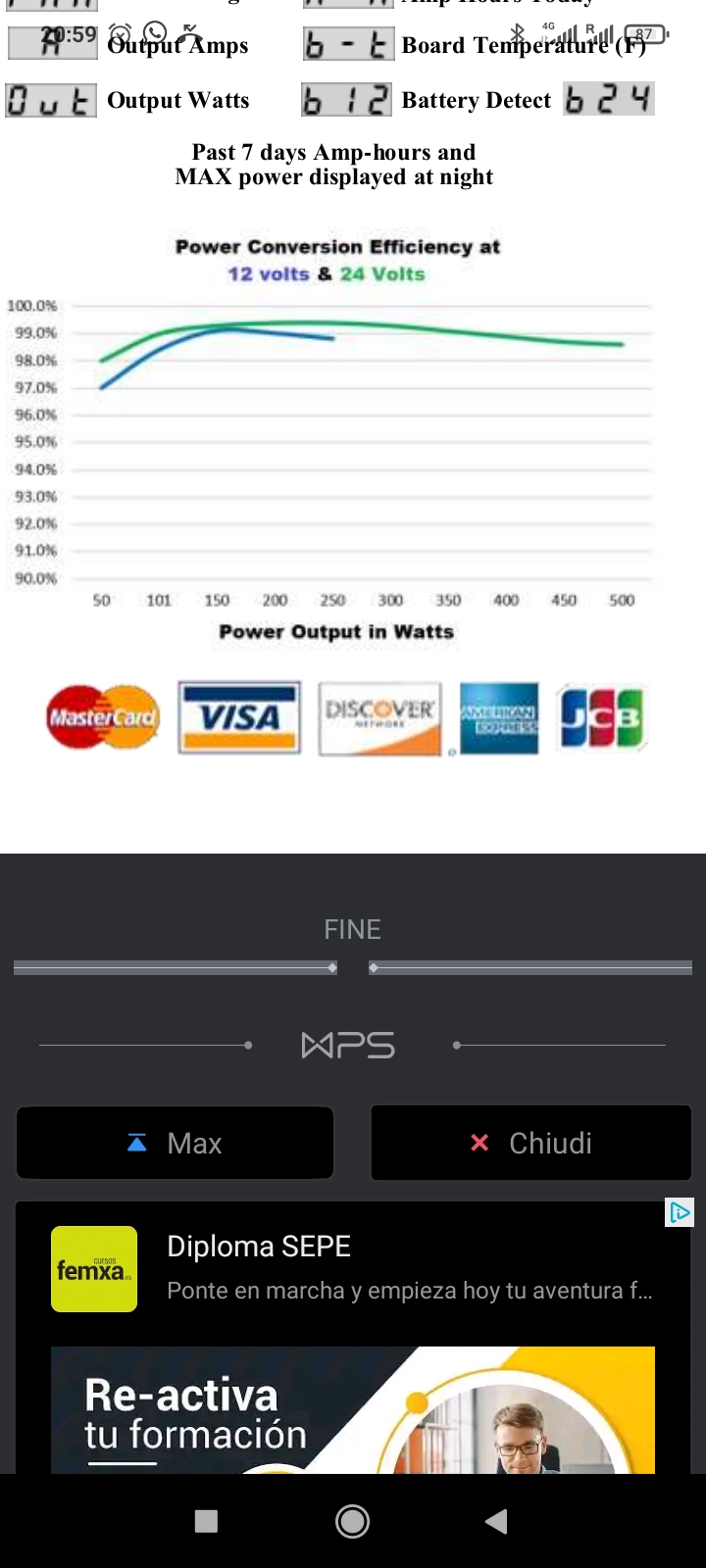Dear all, I have got 6 x 400W modules, these modules are 15m away from the 48V battery (open voltage 41.2V, Imax 11A) I could use the modules 2 in serie und 3 parallel or 3 in series and 2 parallel. My question is, what es the efficiency of the mmpt e.g.: 250/60 or 150 dependent on input voltage? is ther a graph or picture for input voltage vs. efficiency?
thanks an regards



